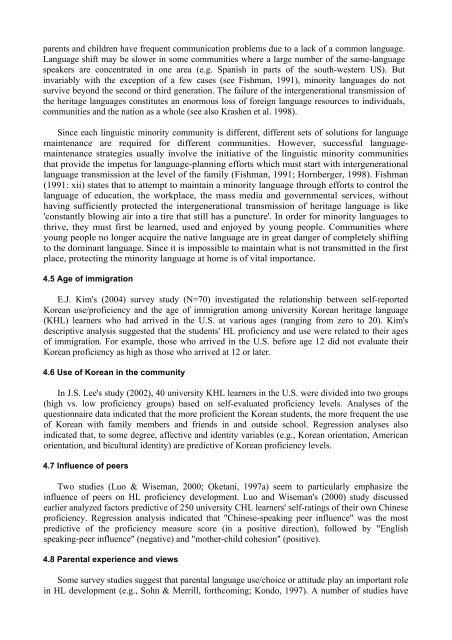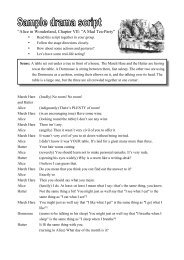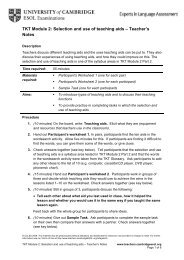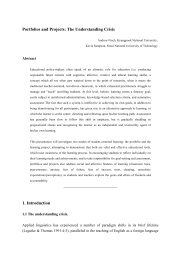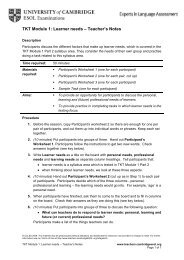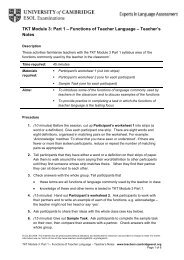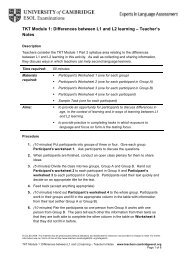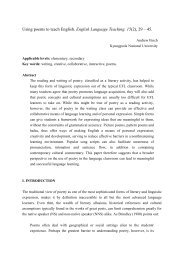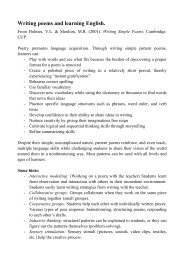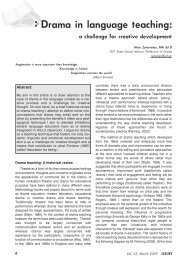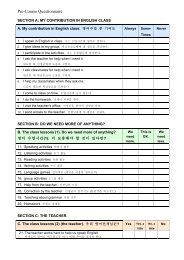here - Finchpark
here - Finchpark
here - Finchpark
You also want an ePaper? Increase the reach of your titles
YUMPU automatically turns print PDFs into web optimized ePapers that Google loves.
parents and children have frequent communication problems due to a lack of a common language.Language shift may be slower in some communities w<strong>here</strong> a large number of the same-languagespeakers are concentrated in one area (e.g. Spanish in parts of the south-western US). Butinvariably with the exception of a few cases (see Fishman, 1991), minority languages do notsurvive beyond the second or third generation. The failure of the intergenerational transmission ofthe heritage languages constitutes an enormous loss of foreign language resources to individuals,communities and the nation as a whole (see also Krashen et al. 1998).Since each linguistic minority community is different, different sets of solutions for languagemaintenance are required for different communities. However, successful languagemaintenancestrategies usually involve the initiative of the linguistic minority communitiesthat provide the impetus for language-planning efforts which must start with intergenerationallanguage transmission at the level of the family (Fishman, 1991; Hornberger, 1998). Fishman(1991: xii) states that to attempt to maintain a minority language through efforts to control thelanguage of education, the workplace, the mass media and governmental services, withouthaving sufficiently protected the intergenerational transmission of heritage language is like'constantly blowing air into a tire that still has a puncture'. In order for minority languages tothrive, they must first be learned, used and enjoyed by young people. Communities w<strong>here</strong>young people no longer acquire the native language are in great danger of completely shiftingto the dominant language. Since it is impossible to maintain what is not transmitted in the firstplace, protecting the minority language at home is of vital importance.4.5 Age of immigrationE.J. Kim's (2004) survey study (N=70) investigated the relationship between self-reportedKorean use/proficiency and the age of immigration among university Korean heritage language(KHL) learners who had arrived in the U.S. at various ages (ranging from zero to 20). Kim'sdescriptive analysis suggested that the students' HL proficiency and use were related to their agesof immigration. For example, those who arrived in the U.S. before age 12 did not evaluate theirKorean proficiency as high as those who arrived at 12 or later.4.6 Use of Korean in the communityIn J.S. Lee's study (2002), 40 university KHL learners in the U.S. were divided into two groups(high vs. low proficiency groups) based on self-evaluated proficiency levels. Analyses of thequestionnaire data indicated that the more proficient the Korean students, the more frequent the useof Korean with family members and friends in and outside school. Regression analyses alsoindicated that, to some degree, affective and identity variables (e.g., Korean orientation, Americanorientation, and bicultural identity) are predictive of Korean proficiency levels.4.7 Influence of peersTwo studies (Luo & Wiseman, 2000; Oketani, 1997a) seem to particularly emphasize theinfluence of peers on HL proficiency development. Luo and Wiseman's (2000) study discussedearlier analyzed factors predictive of 250 university CHL learners' self-ratings of their own Chineseproficiency. Regression analysis indicated that "Chinese-speaking peer influence" was the mostpredictive of the proficiency measure score (in a positive direction), followed by "Englishspeaking-peer influence" (negative) and "mother-child cohesion" (positive).4.8 Parental experience and viewsSome survey studies suggest that parental language use/choice or attitude play an important rolein HL development (e.g., Sohn & Merrill, forthcoming; Kondo, 1997). A number of studies have


